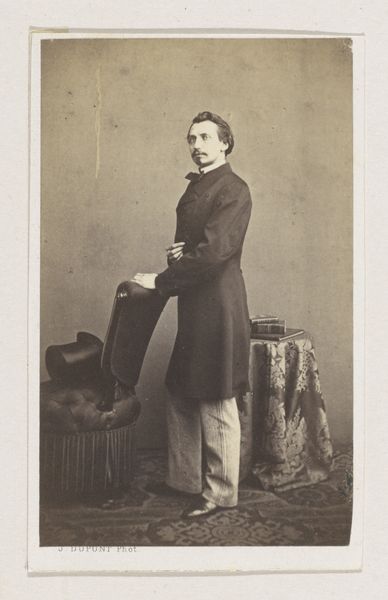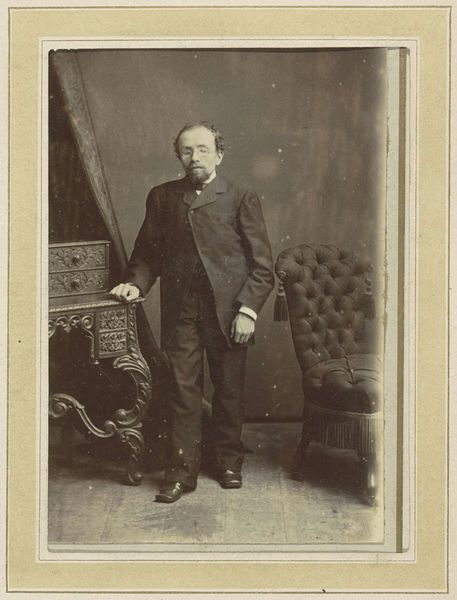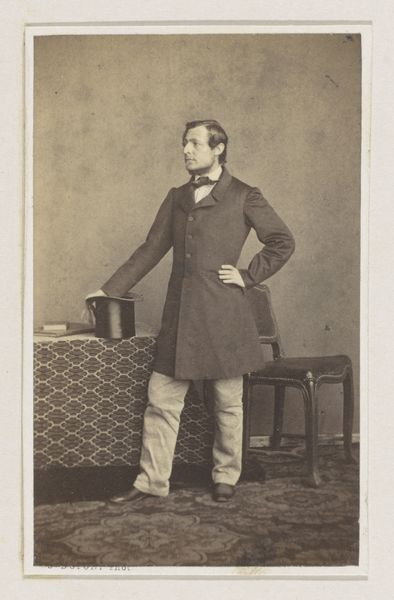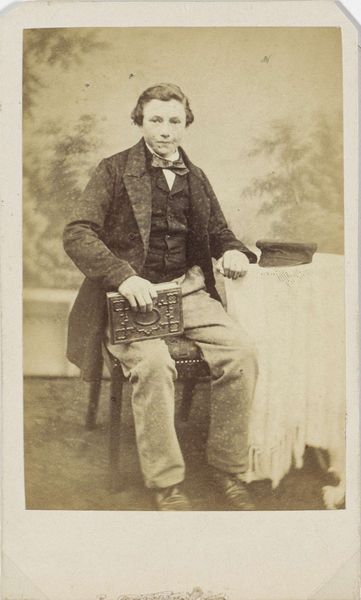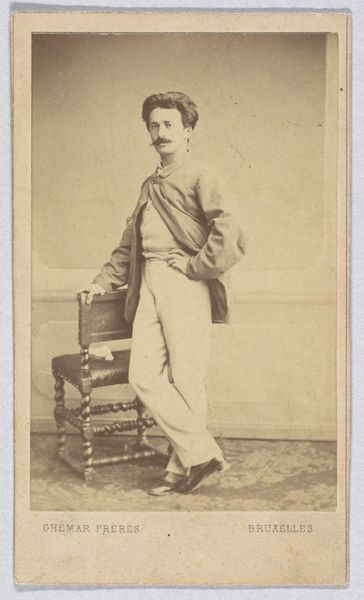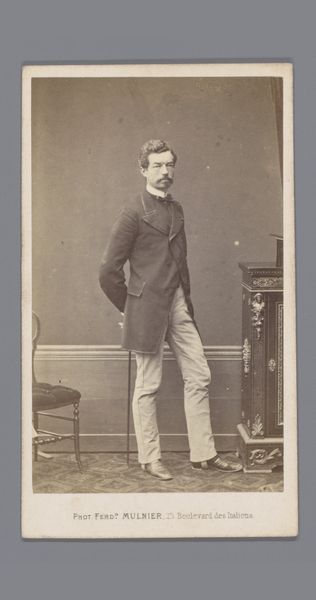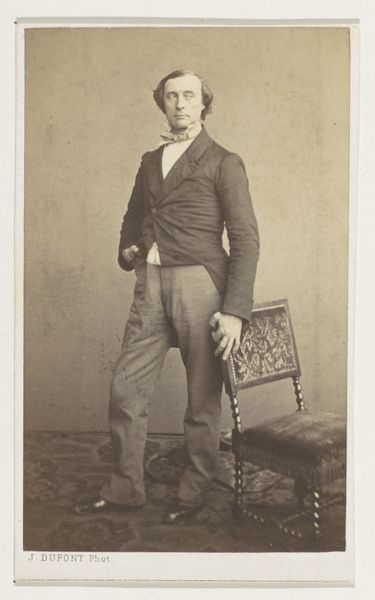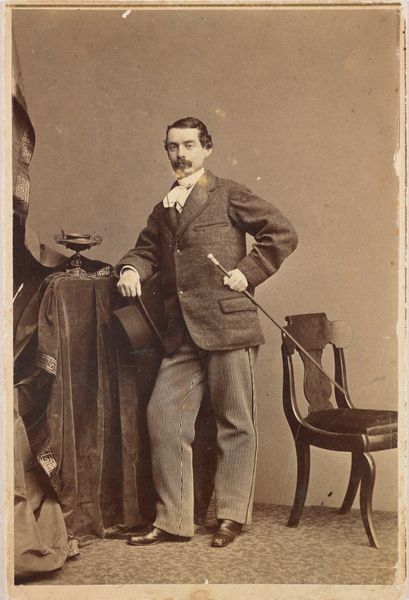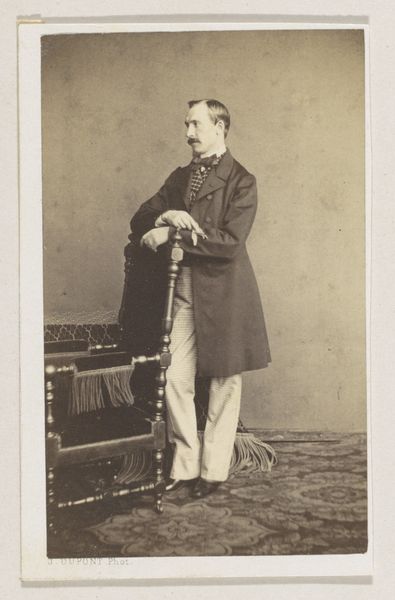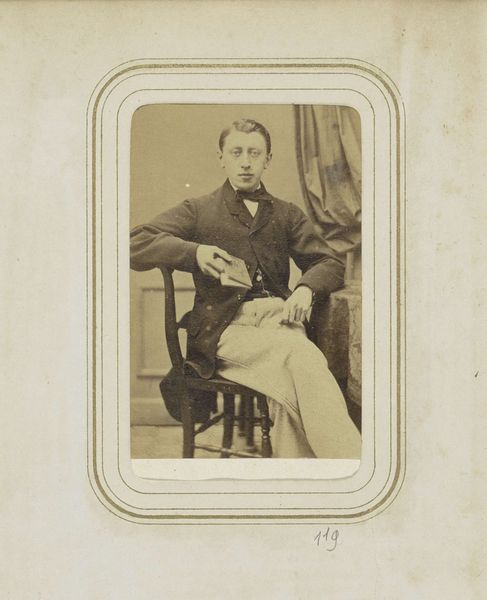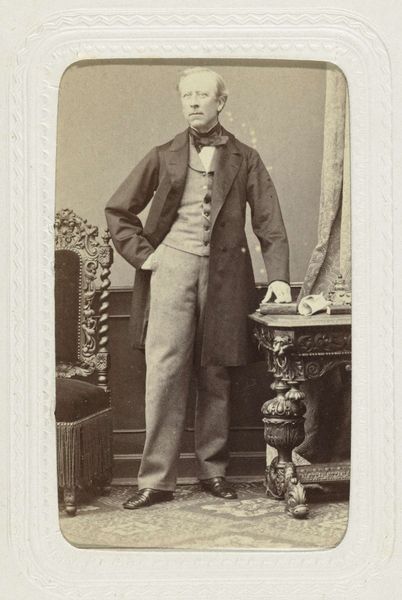
photography, gelatin-silver-print
#
portrait
#
archive photography
#
photography
#
historical photography
#
historical fashion
#
gelatin-silver-print
#
19th century
Dimensions: height 89 mm, width 57 mm, height 105 mm, width 62 mm
Copyright: Rijks Museum: Open Domain
Curator: This intriguing photographic portrait, titled "Portrait of an Unknown Young Man," was created around 1865 by Wegner & Mottu. It’s a gelatin-silver print, currently held in the collection of the Rijksmuseum. Editor: The sepia tones give it a certain gravity. And the pose, leaning so casually on the chair... is he weary, or just striking an attitude? Curator: The subject's attire speaks volumes, really. It places him firmly within the conventions of 19th-century bourgeois masculinity. His suit, the carefully styled hair – they reflect a social aspiration, perhaps an awareness of class. I'd venture to say he is constrained by a certain gendered role. Editor: Agreed, but let’s look at the composition. The light emphasizes the sharp lines of his face, but the blurred background diminishes depth, which emphasizes his alienation. The meticulous detail in the clothing actually makes him seem more rigid, confined by the composition. The formality flattens the feeling in his gaze. Curator: Right, and even his "unknown" status adds layers of meaning. Was this commissioned, an act of personal promotion? Or a memento, hinting at loss or distance? It's the archive's power to document while simultaneously erasing identity. It provokes contemplation about societal values regarding appearance, wealth, and identity at the time. Editor: That tension between revelation and concealment really drives the photo. Wegner & Mottu have framed a body, meticulously captured his surfaces—but have also shrouded any sense of interiority. And note the surface qualities; a matte paper texture and minimal tonal range emphasize the formal construction over any sense of ‘presence’. Curator: Ultimately, what resonates is the subject's lack of voice. Here’s an entire individual, presented to us but forever silenced within the image's boundaries and context. He has lost authorship of his identity. Editor: So true. Thinking about it now, the longer I look at this piece the more it embodies those classic oppositions that photography always grapples with; presence and absence, clarity and ambiguity. This portrait reminds me how images communicate despite the image-makers' intent.
Comments
rijksmuseum about 2 years ago
⋮
Carte-de-visite portraits were the major source of income for professional photographers. Wegner, a German lithographer, established himself in Amsterdam in 1849. We know with certainty that he already had a photography studio in 1855, and from 1862 he worked together with Mottu. The duo became the city’s most sought-aftersociety photographers. This photograph – presumably of an assistant – was a joke: the young man was also recorded from behind.
Join the conversation
Join millions of artists and users on Artera today and experience the ultimate creative platform.

